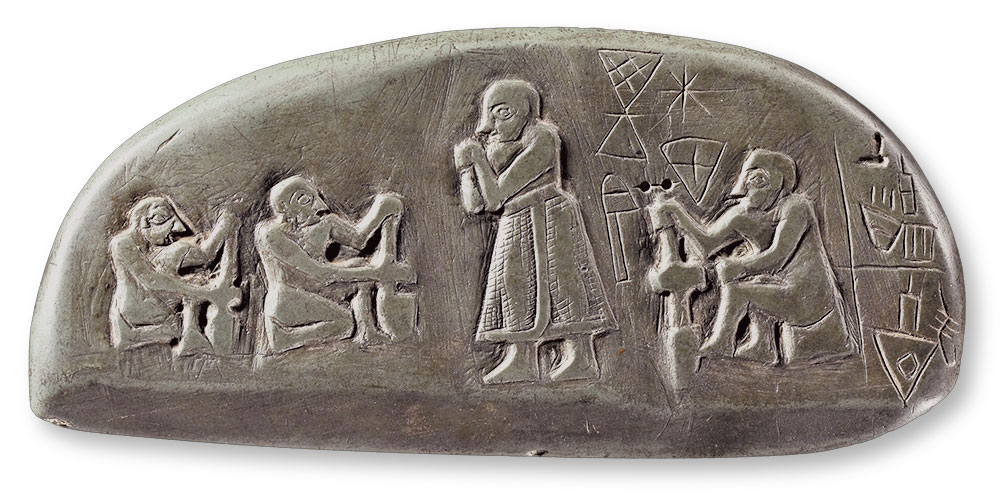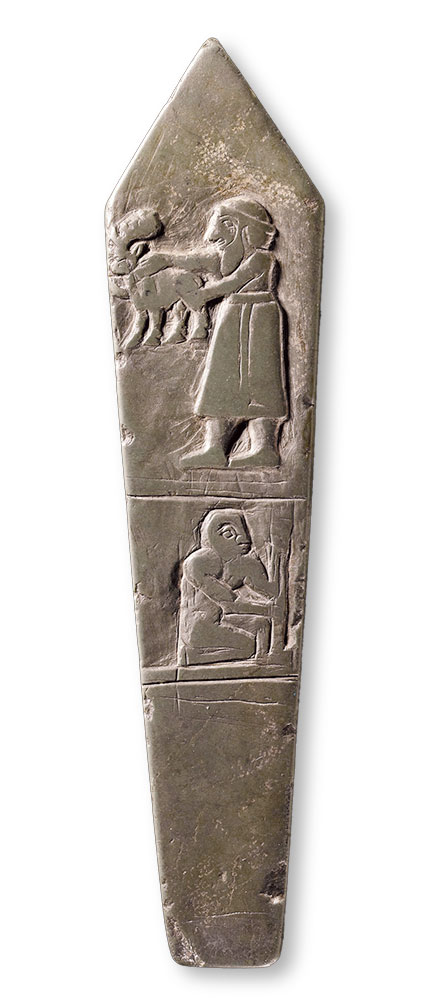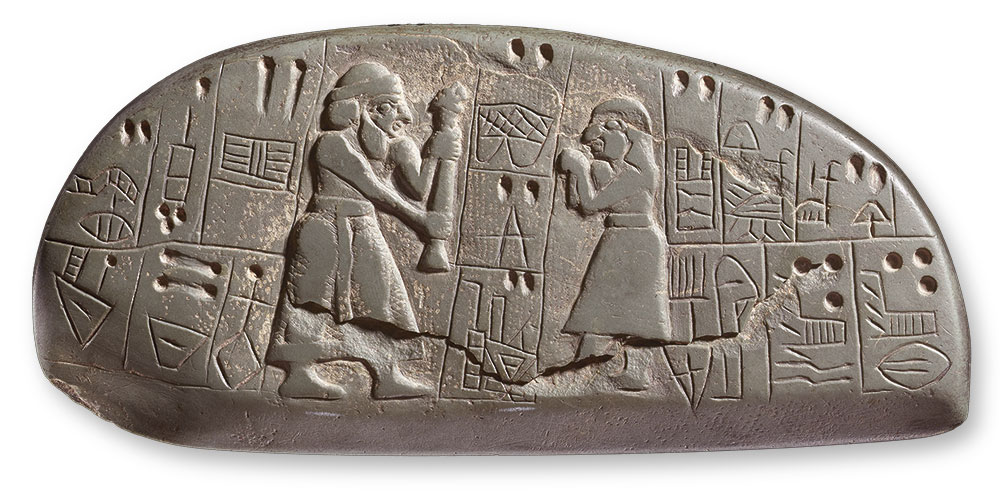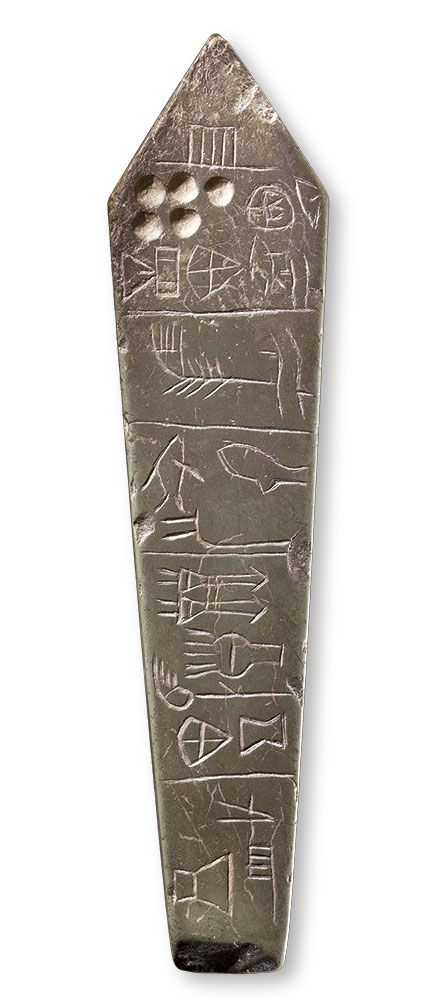These two objects shaped like crafting tools form a pair. Together they record the first woman in history known by name, KA-GÍR-gal. She is depicted on the scraper’s obverse with her hands raised before her mouth in a reverent gesture. The inscriptions incised on both objects suggest that she may have been involved in a land sale as a coseller. Facing her stands a bearded figure holding an elongated object, possibly a land-sale peg, which would have been inserted into a building wall to proclaim the transaction. A similar male figure holding a young goat appears on the chisel. The figures on the scraper’s reverse may be preparing a feast to celebrate the recently concluded deal.
Stone scraper and chisel recording the first woman known by name
Mesopotamia, Sumerian
Jemdet Nasr–Early Dynastic period, ca. 3000–2750 BC
Proto-cuneiform inscriptions
Schist (phyllite)
The British Museum, London, Acquired From Dr. A. Blau, 1899; BM 86260 and 86261
© The Trustees of the British Museum
Sidney Babcock: KA-GÍR-gal: the first woman in history known by name! These two objects, shaped like a scraper and a chisel, bear an inscription mentioning her as a co-seller in a land sale. Even more fascinating is the fact that not only her name but also her image came down to us: she is represented on the scraper with her hands placed before her mouth in a gesture of reverence. Her relationship to the bearded figure standing before her is uncertain, but the object he is holding in his hands might have been a "land sale peg." Such pegs were inserted into the wall of a building to proclaim a transaction. The other depicted figures may be preparing a feast to celebrate the recently concluded deal.
As demonstrated by the Stele of Shara-igizi-Abzu as well, also on view here, women were actively involved in the economic life of early cities. The first urban centers of Mesopotamia depended on women's labor and such monuments testify to their role in selling privately owned land in ancient Sumer.




